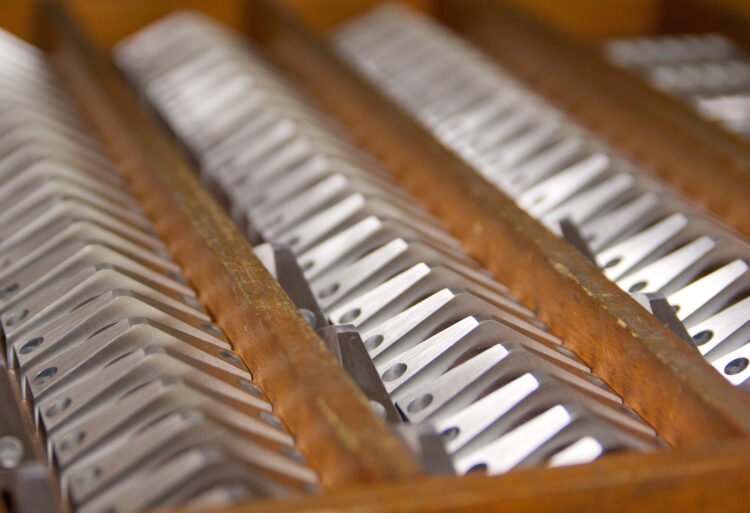SME factory visit
Tucked away in the small town of Steyning in West Sussex, England is the most inspiring factory in the hi-fi industry. Here is a late fifties building that has not been significantly changed since it was built by Alastair Robertson-Aikman (ARA) when SME (the Scale Model Equipment Company, as it was known) branched out into pick-up arms and outgrew its original premises. The original works are still being used by SME for plastic mouldings but it’s at Mill Road that all the metalwork for the pick-up arms and turntables is made and finished. And I mean all the metalwork, SME makes all the slot screws in its products because only they can make them to the standards they expect.
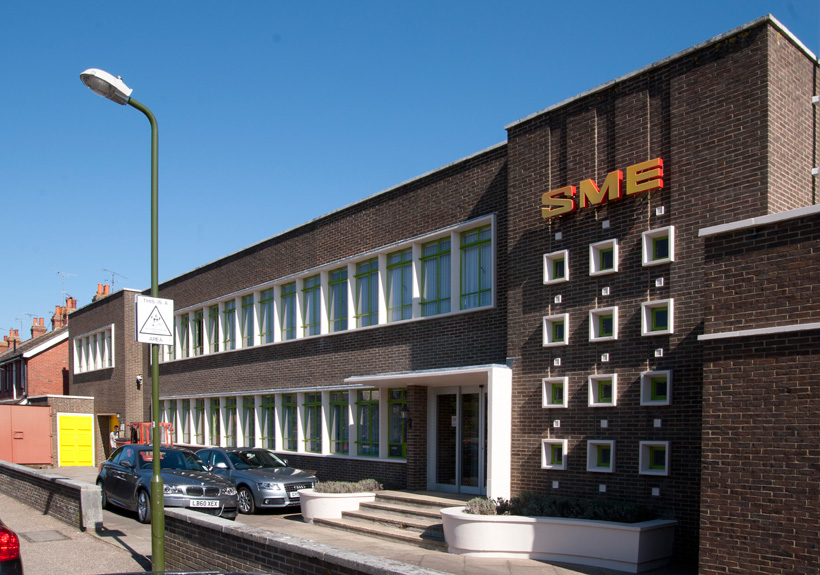 SME HQ, Mill Lane, Steyning
SME HQ, Mill Lane, Steyning
SME could not employ 58 plus people if it only served the hi-fi business despite the upturn in analogue sales over the last 15 years, we audio enthusiasts benefit from the company’s work in the medical and other sectors where its very high precision work is valued. I asked works manager Liam Daley who their main competitor is and the first name to come up was Philips, Eindhoven because they also work in the field of medical technology. There were parts for autoclave sterilizers at various stages of production around the factory, and Liam showed me parts for a radiotherapy machine which were being checked in 3D for precision of manufacture by a man in a white coat using a large machine from Sweden. Men in white coats are part of the scenery at SME, a feature which gives one even more faith in the company’s dedication to quality.
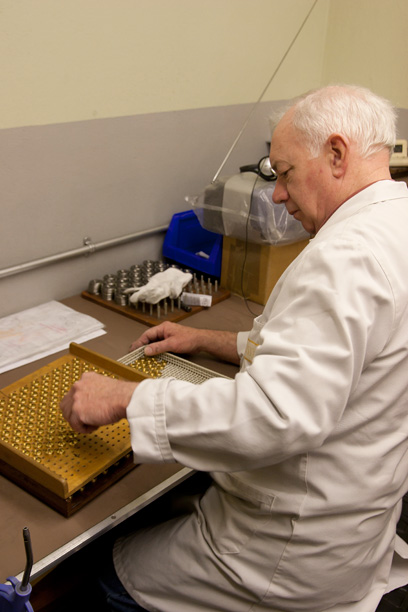 |
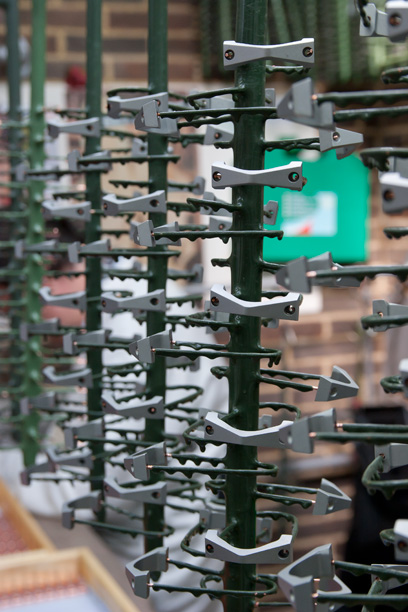 |
Left: Michael Harris transferring Anti skate Control Drums. Right: Series 300/IV and V linished Die-Cast Yoke Heads
It’s a father and son operation in more ways than the many, since ARA’s passing his son Cameron has taken the helm of an organisation that employs a number of fathers and sons from the local area. These men run the various workshops for 20 hours a day, seven days a week. Figures which have remained constant despite the recent economic downturn and which are mirrored in a workforce that has also remained the same. But looking at the way they do things this is the least that one expects, by hi-fi industry standards let alone turntable building standards this place is a jewel. When you see how much effort SME puts into getting every part precisely right and finished in such a fashion that it will outlast at least the first owner if not the fourth or fifth you begin to wonder how it can be done for such a reasonable price.
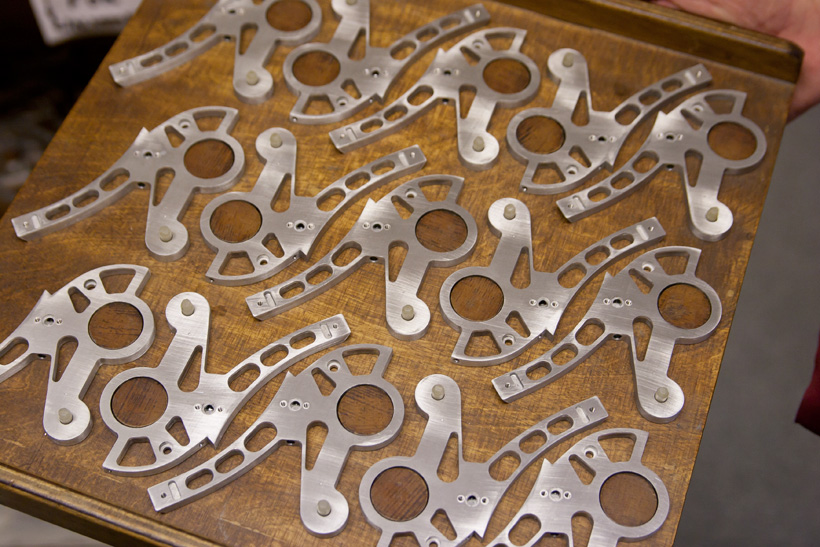 Series 300/IV/V control brackets first stage linished
Series 300/IV/V control brackets first stage linished
Control Bracket manufacturing Process
The following table reveals the 11 manufacturing processes that the control bracket that you find on the Series 300, IV and V pick-up arms goes through.
1) Die-cast in Mazak
2) Hand Fettled
3) First stage linished
4) Machined
5) Final linished on all faces
6) Barreled to remove sharp edges
7) Vaqua blasted for a key
8) Copper plated
9) Inspected and hand fettled
10) Vaqua blasted for surface finish
11) Nickel and Chrome plating
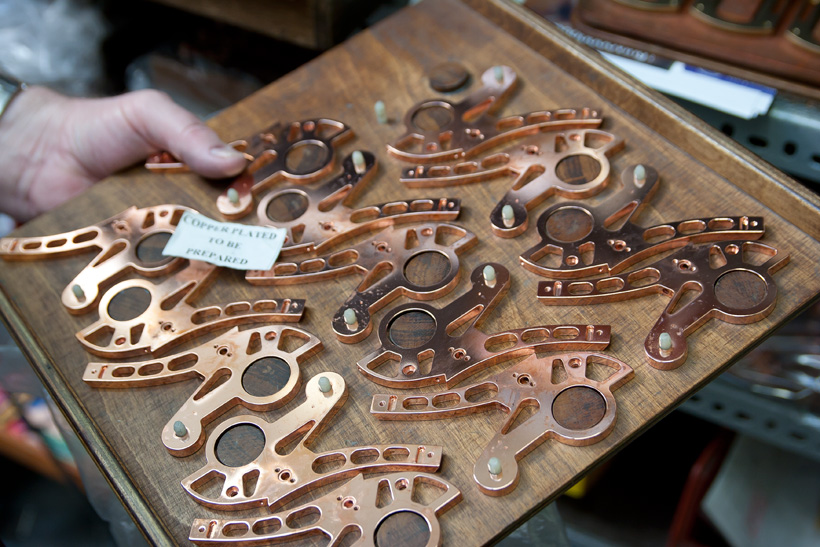 Series 300/IV/V control brackets copper plated
Series 300/IV/V control brackets copper plated
Linishing is a fettling process that involves removing any sharp edges – it’s a tricky job with small parts because they have to be pressed against a sanding belt by hand, and the smaller the part the hotter it gets. There is one man at the company who seems to enjoy the job however, possibly the need for total concentration offsets the discomfort of the hot metal but I can’t see it myself. SME copper plates its parts to a thickness of between 50 and 60 microns, this is so that there’s no chance of the plating from lifting in particularly humid environments. ARA personally worked on the development of the plating techniques that produce the black chrome finish that the company uses to this day. The plating shop is only now receiving its first full renovation since construction and this is primarily in order to replace the wiring. After manufacture each part needs to be checked and assembled to build it up into an arm or turntable. Bearing assembly is a particularly skilled job because the spindles are made to single figure micron tolerances and have to be put together with utmost care and patience.
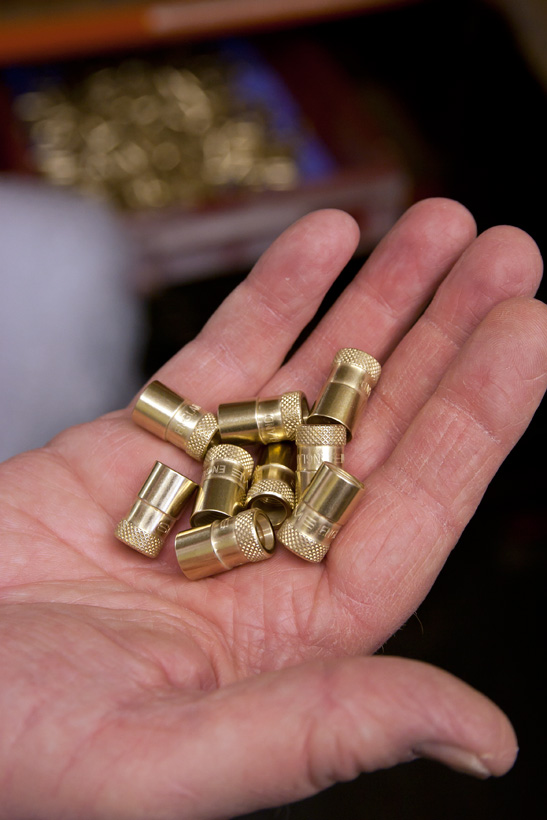 |
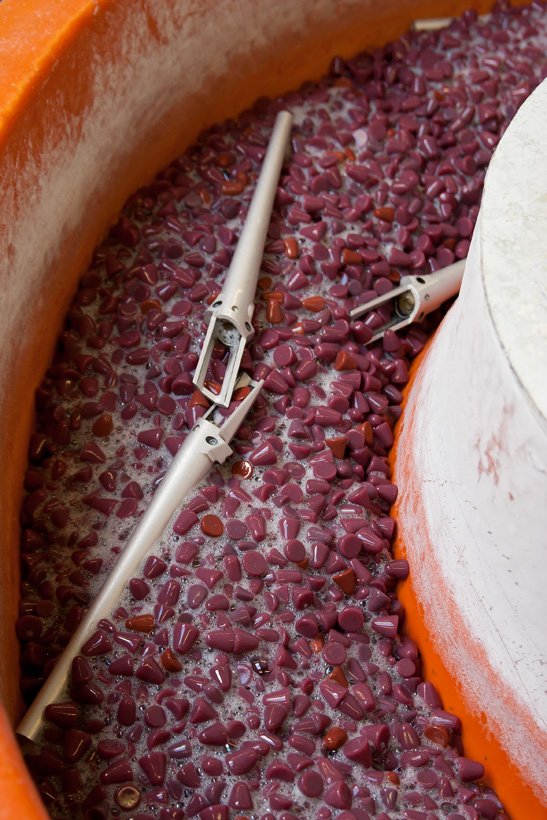 |
Left: Brass RCA phono plug caps prior to plating. Right: Series 300 magnesium barrelled using resin based beads
ARA developed a technique for testing finished arms which he taught to his engineers, this involves ‘zonking’ the or tapping the counterweight against the bearing’s end stops whilst listening very closely for any rattles. This sounds more violent than it actually is, in fact it’s very gentle and you wouldn’t imagine that it would reveal any shortcomings in construction, but that’s where the skill comes in.
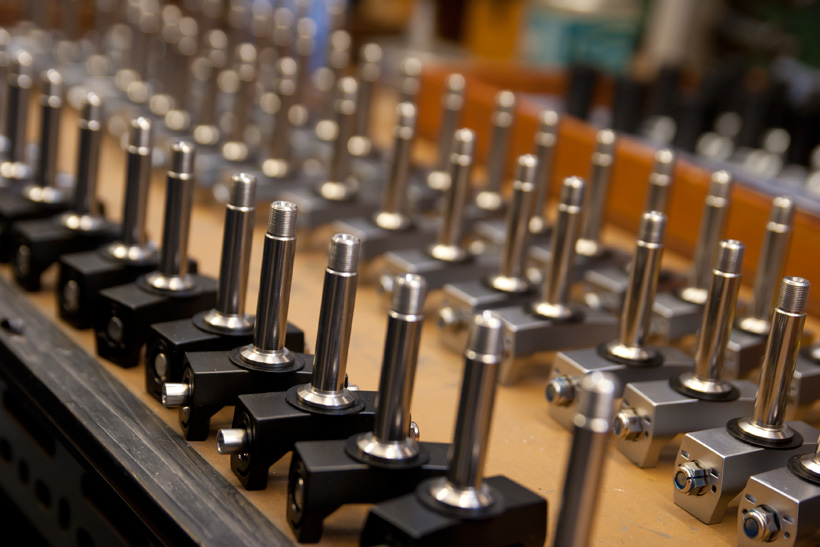
Yoke assembly for Series 300/IV/V
I asked Liam why the company feels the need to build every part of its arms and turntables and he explained that “complete manufacture gives complete control and the ability to service anything”. This is an important point, SME can service pick-up arms that are fifty years old, I can’t think of any other companies in our business that have even remained in constant ownership for that long let alone offer the same service.
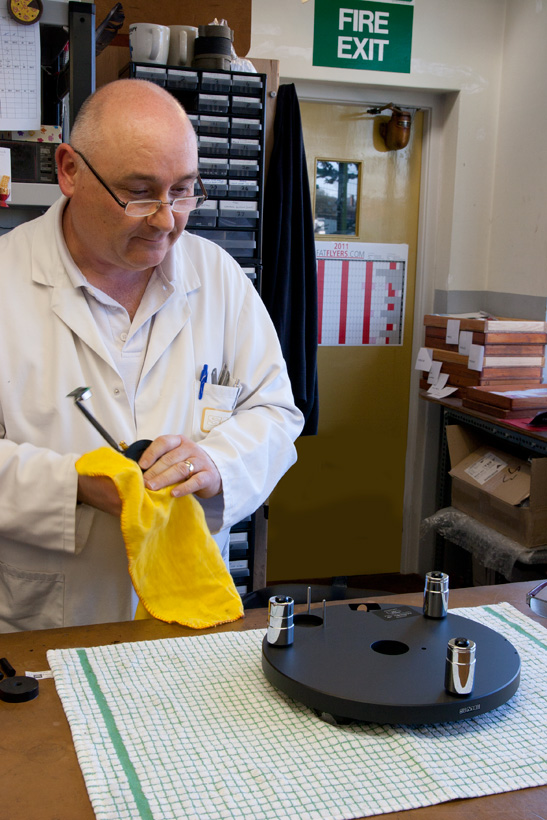 |
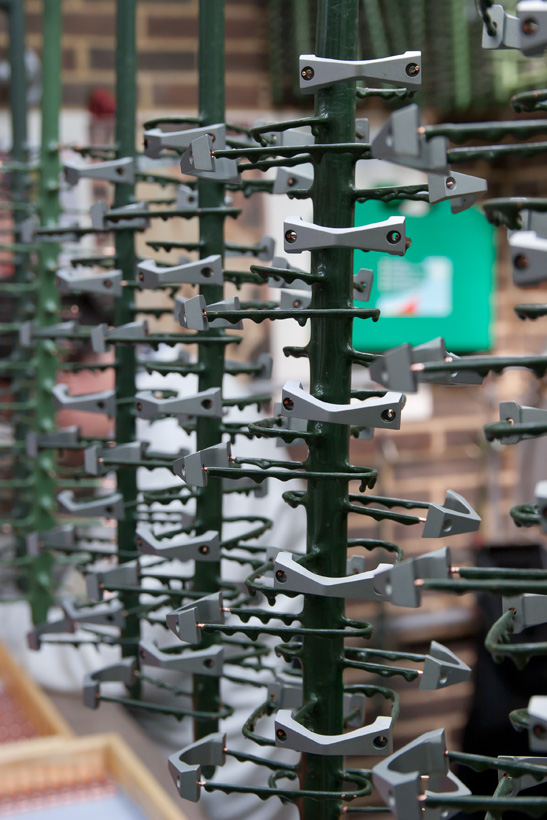 |
Left: Andrew Cosham assembling Model 10A. Right: Series IV top yokes in the plating shop
In fact there are very few companies that make so much in-house at all, it’s a very expensive way to do things in the short and medium term and one has to give the Robertson-Aikmans credit for persevering through analogue’s dark days when this side of the business can’t have been very profitable. Since as early as 1996 however SME has seen a 10% year on year growth for its arms and turntables, a range that has grown to seven pick-up arms and five turntable models.
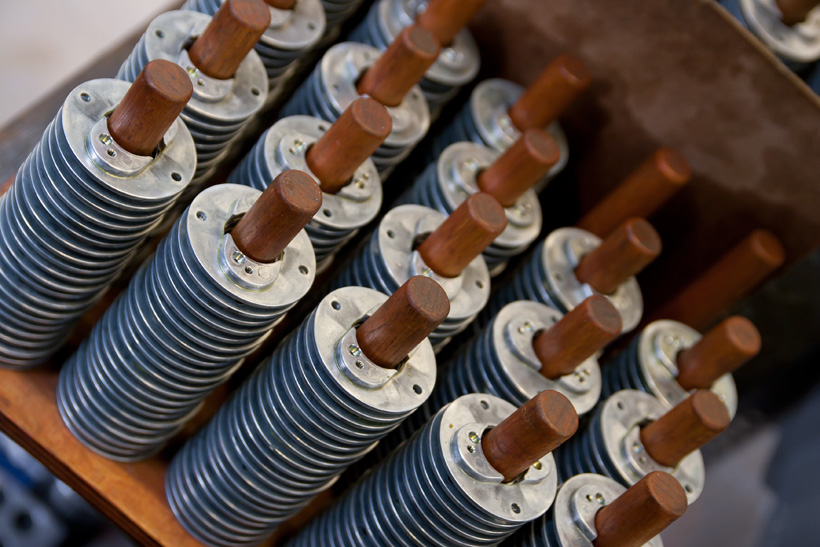
M2 Series die-cast bases
After the factory tour Cameron took me down to ARA’s famous music room which remains much as I remember it from the time when he was alive. Four pairs of Quad ESL63s are stacked two high in brass weighted frames with one pair of stacks facing the listeners and the other pair behind them at right angles. These are driven by a pair of monster Krell class A power amplifiers and the whole lot reside behind a green curtain in a distinctly theatrical setting. The source and preamplifier are right in front of the listening position in the Japanese style, it’s easy to see why, you wouldn’t want to have to cross several yards of carpet to a system behind the curtains every time a record finished. Unfortunately one of the panels had developed a fault especially for my visit but despite the slight buzz this produced there was no escaping the phenomenal resolution and breadth of image the system produced with an SME Model 20/3A sporting a Clearaudio Goldfinger cartridge at its front end. I can’t say that I’m a big Neil Diamond fan but hearing his classic live album Hot August Night it became apparent why so many people were and probably still are. The atmosphere was electric and Diamond breaks through the usual schmaltzy gloss and achieves a bit of communication thanks to ARA’s impressive music room.
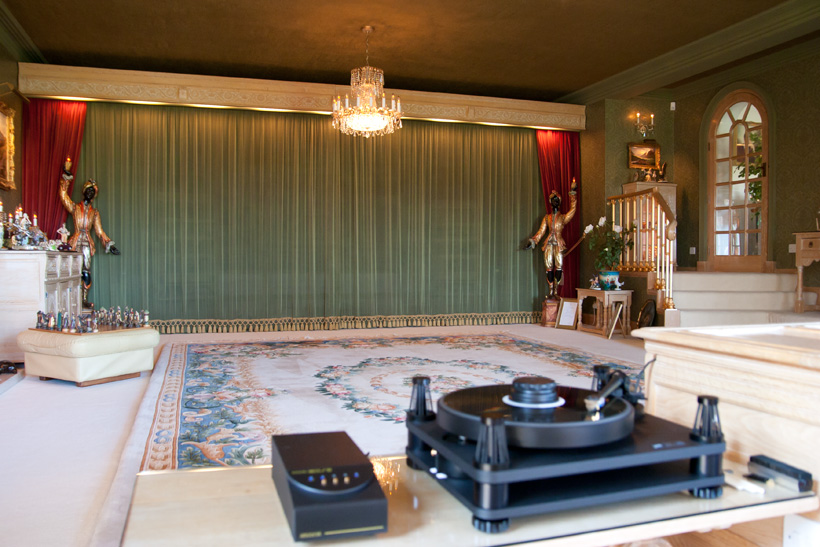
Alistair Robertson-Aikman’s listening room


